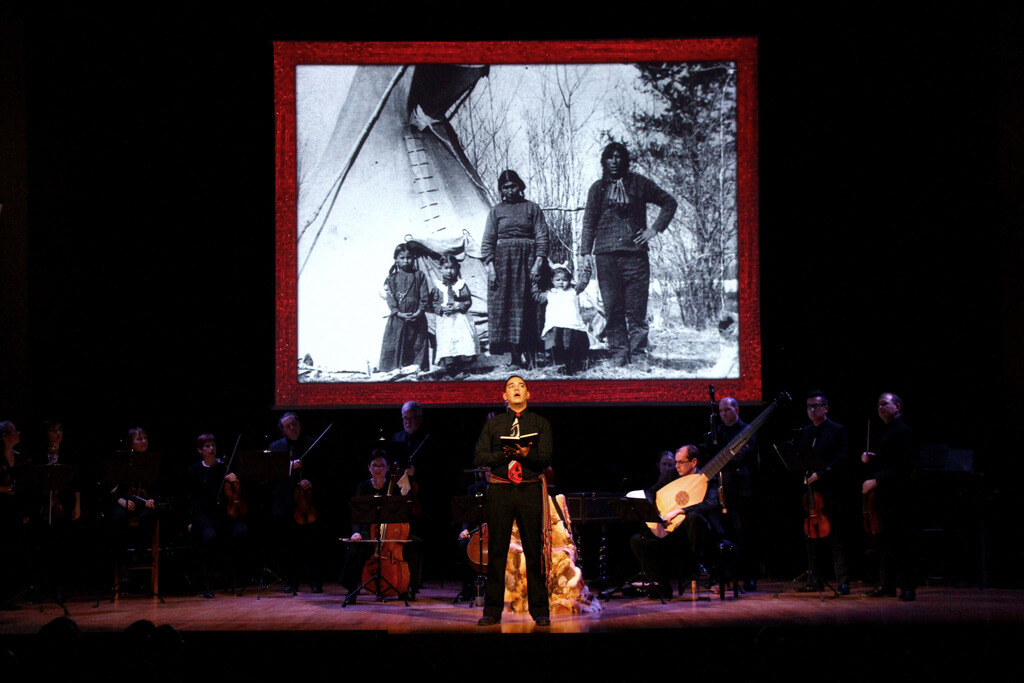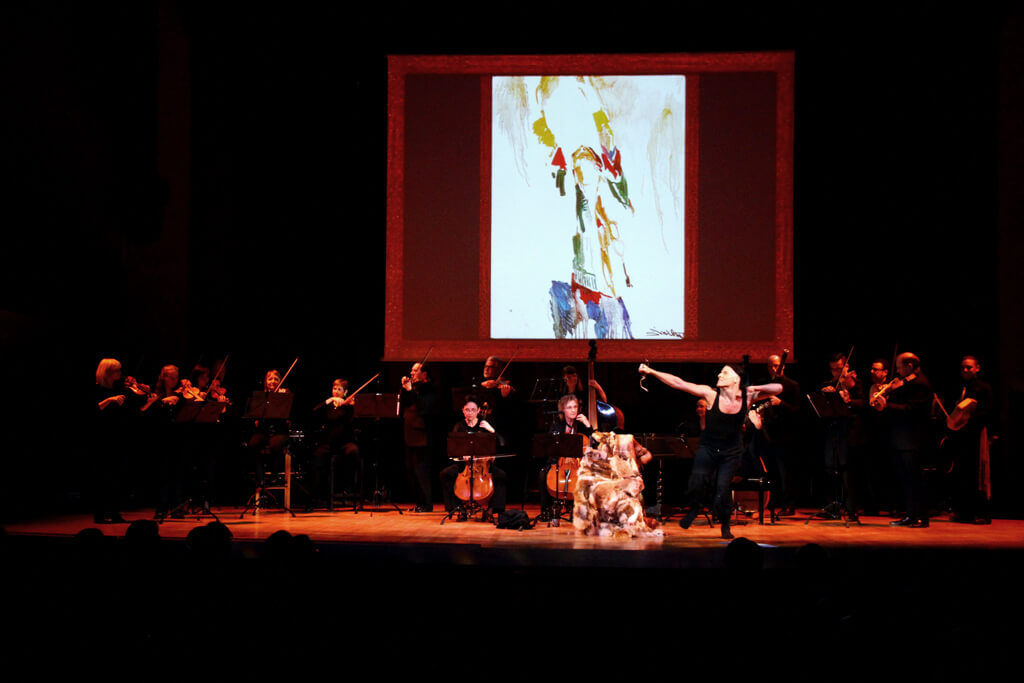
Visions and Voyages: Canada 1663-1763, conceived by Alison Mackay. Performed by Tafelmusik and guests. At Trinity-St Paul’s Centre. To Feb. 26.
Tafelmusik Orchestra bass player Alison Mackay’s multimedia, multi-disciplinary programs have become something to look forward to, as they weave music, images, and words into artful storytelling. Her latest brainchild, Visions and Voyages: Canada 1663-1763, had its premiere at Trinity-St Paul’s Centre’s Jeanne Lamon Hall on Wednesday evening. Like the shows that preceded it, this program is brimming with wonderful ideas wrapped in glorious music. But unlike the other shows, it is missing that extra little bit of editorial polish that makes for something extraordinary.
In short, Visions and Voyages gets an A for effort, but a C+ for execution.
It’s not that there isn’t much to enjoy here. The time period covers the initial colonization of Canadian territory by France and Great Britain, offering Tafelmusik a perfect excuse to present music from this period (and a few decades before), which represents the span of the Baroque style from two countries well represented with great composers.
We get to hear some instrumental gems by Marin Marais (1656-1728), from his opera Sémélé, and by Jean-Baptiste Lully (1632-1687), most from his opera Alceste. The English side is well represented by Henry Purcell (1659-1695) and George Frideric Handel (1685-1759). There are also musical cameos by Louis Couperin, Marc-Antoine Charpentier, and Georg Philipp Telemann (the evening’s German interloper).
The orchestra played well, and the music was well-chosen and layered. But, unlike in the other shows, the musicians played from scores rather than having learned the pieces by heart. When a change of formation on stage was called for, it had to be done during the narration, with the carrying of stands and chairs.
All but one piece was from the royal courts of the Old World. The holdout, the anonymously written “Johnny Cock the Beaver,” was in a folk fiddle style. Of course, it was the monarchs and nobles who held all the cards in those times, but Mackay is far more concerned about the other side of the story in the visual and textual aspects of this show.

Visions and Voyages is really about showing us how we got into such a mess with our First Nations peoples: How they were stripped of their land and customs and, through later policies such as residential schooling, of their very identities. Here, too, despite being confronted with facts to make us cringe, we are treated to words and images, such as the building of a birch bark canoe, that underscore the deep humanity and culture of First Nations people.
Despite trying hard to fit the music to the mood of the images and text, it was difficult not to find a jarring disconnect between courtly music and the stories of colonization and economic greed. That said, Ryan Cunningham did a decent job of conveying texts intelligently chosen by Mackay.
The show also featured dancer Brian Soloman, who really had little to do until the very end, when the musicians cleared the front of the stage so that he could perform a powerfully evocative solo dance that tried to tie all of the evening’s themes together. But because this happened right at the end, this segment felt more tacked on than an integral part of the show.
Rafa Javanfar, who has created the visuals for Tafelmusik’s previous multimedia shows, did a decent job with a somewhat thin collection of images. Glenn Davidson’s lighting was so discreet as to seem static much of the time.
There is more than 90 minutes of great music to enjoy, and several stories to provoke thought and reflection. Soloman’s dancing was powerful. But all these elements ultimately failed to coalesce into a tight, coherent whole.
This is Tafelmusik’s contribution to Canada’ sesquicentennial celebrations this year. Could it be an omen that Canada is still fundamentally unsure about which stories it wants to tell about itself, and how it should tell them? Perhaps that is the real story.
For more REVIEWS, click HERE.
#LUDWIGVAN
- Classical Music 101: What Does A Conductor Do? - June 17, 2019
- Classical Music 101 | What Does Period Instrument Mean? - May 6, 2019
- CLASSICAL MUSIC 101 | What Does It Mean To Be In Tune? - April 23, 2019



